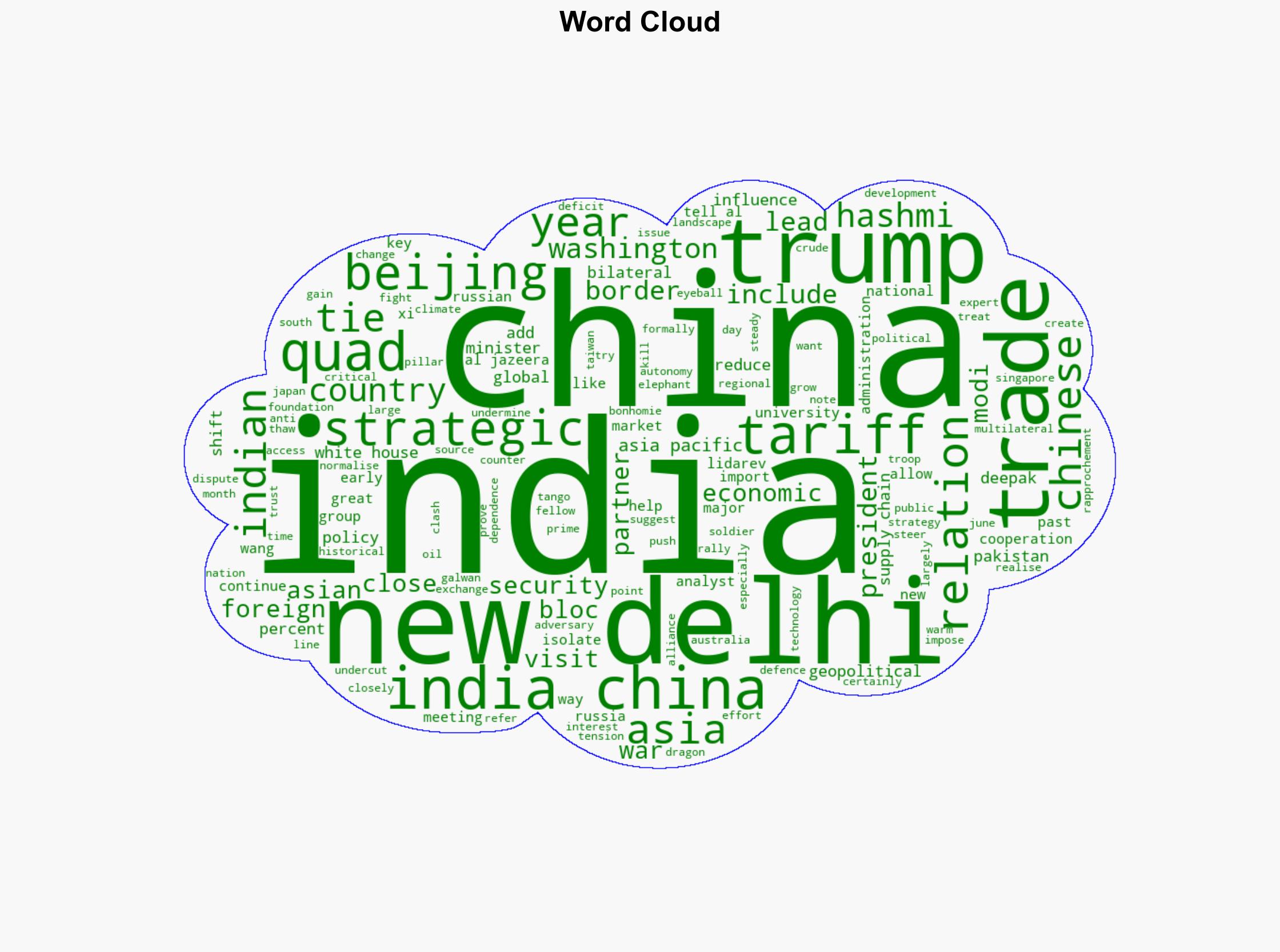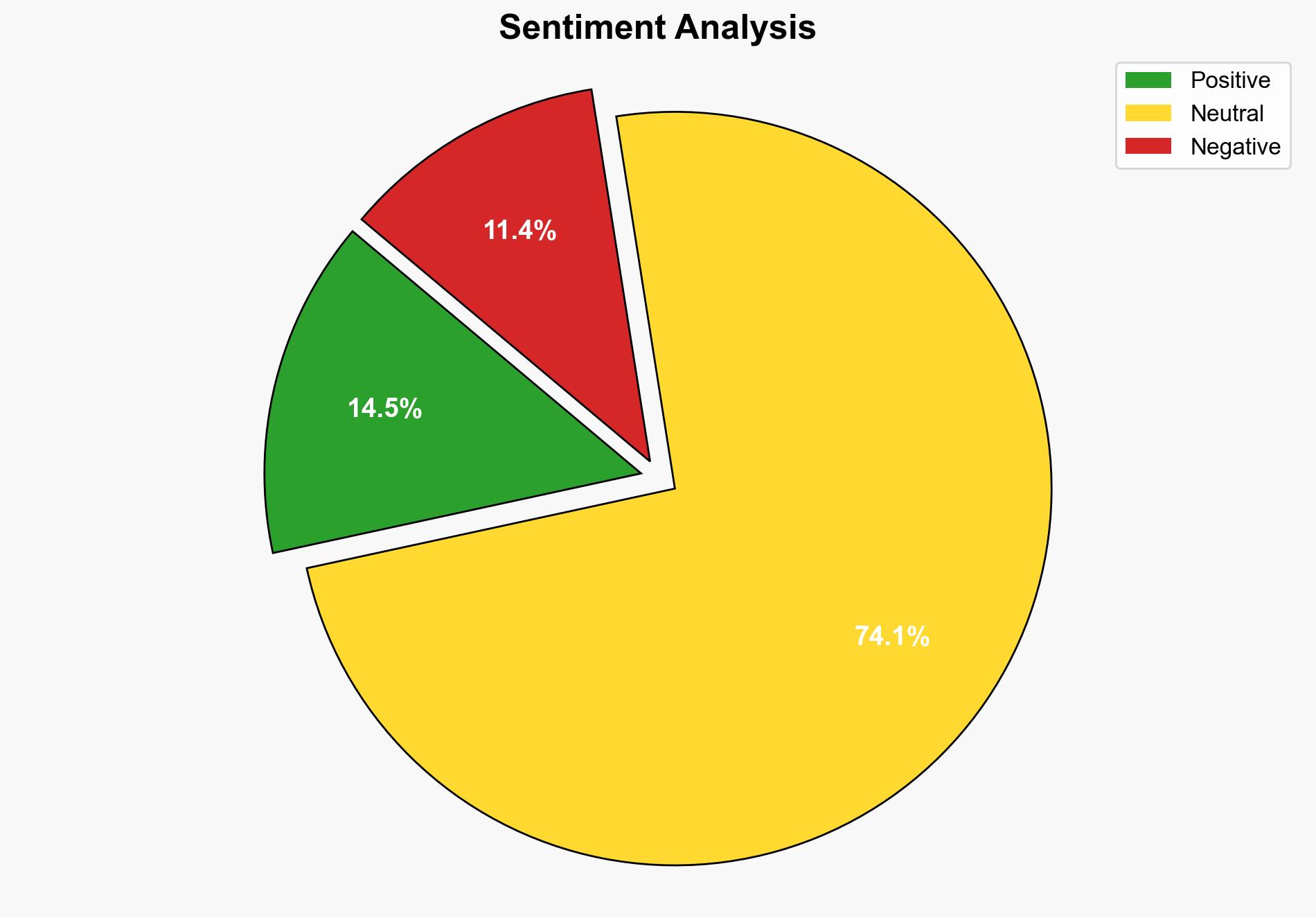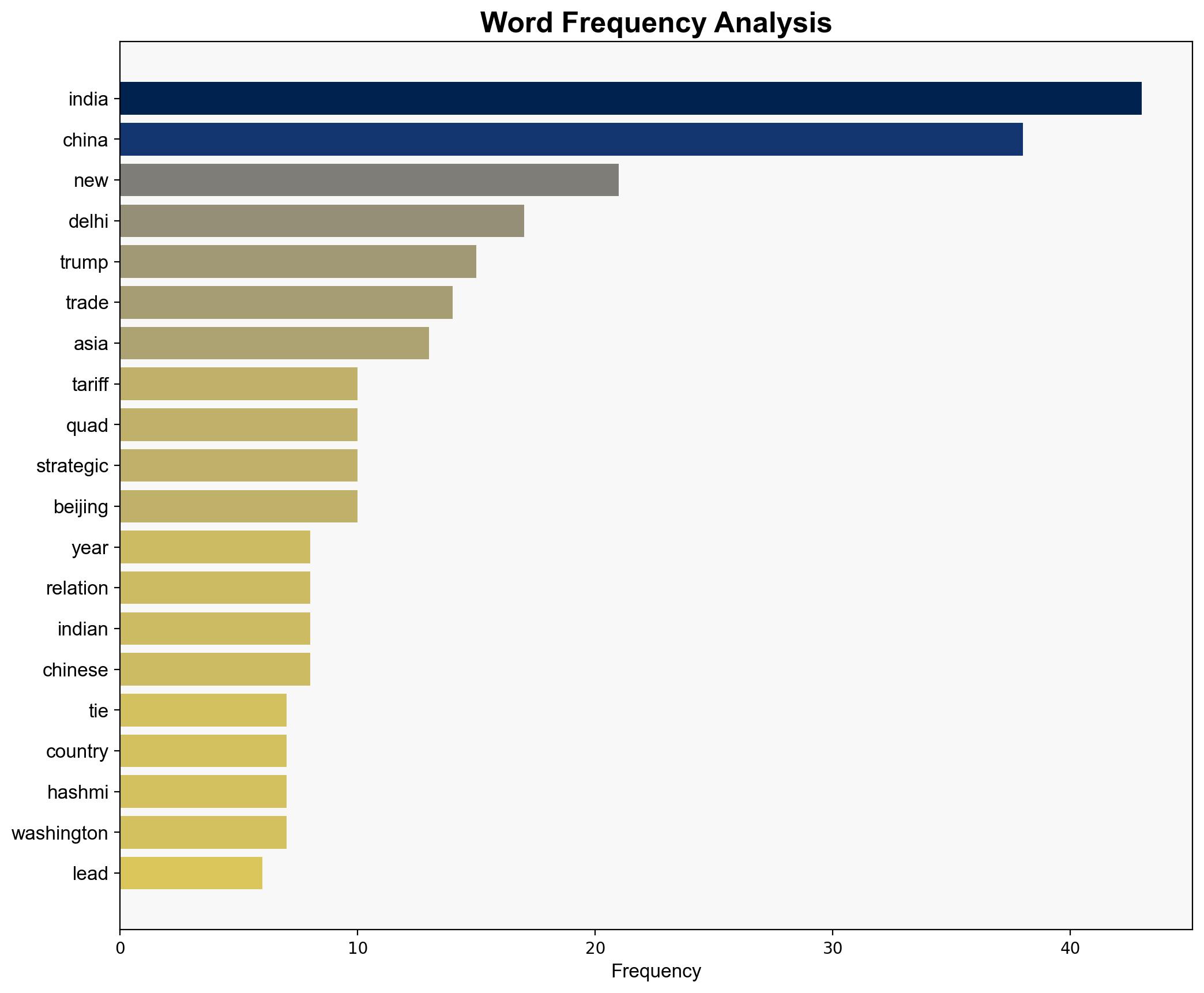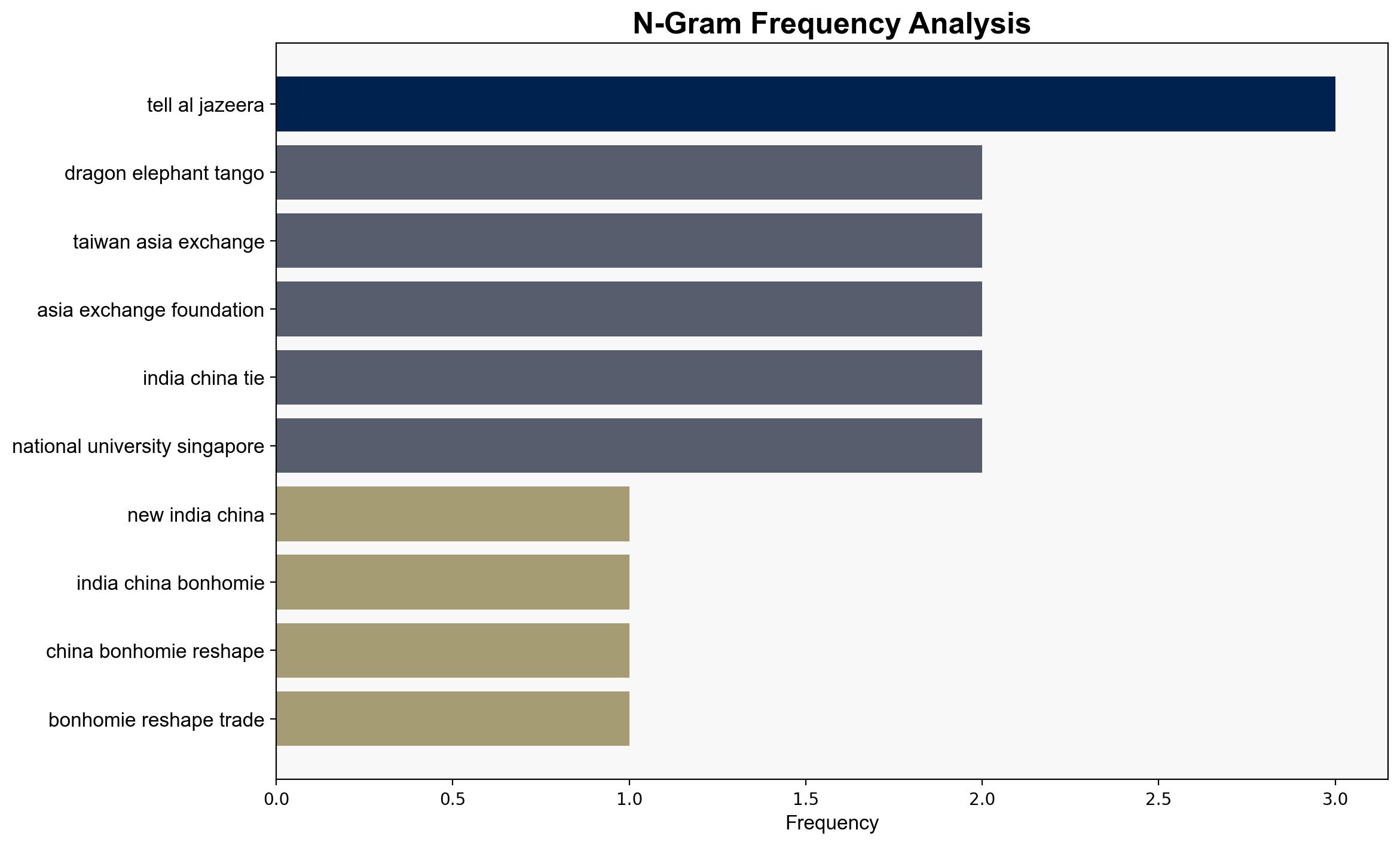Can the new India-China bonhomie reshape trade and hurt the US in Asia – Al Jazeera English
Published on: 2025-08-23
Intelligence Report: Can the new India-China bonhomie reshape trade and hurt the US in Asia – Al Jazeera English
1. BLUF (Bottom Line Up Front)
The strategic judgment suggests a moderate confidence level that the evolving India-China relationship could potentially reshape regional trade dynamics, possibly undermining US influence in Asia. The hypothesis that India and China will strengthen economic ties, thereby reducing US leverage, is better supported. Recommended action includes enhancing US diplomatic engagement with India to counterbalance China’s influence.
2. Competing Hypotheses
1. **Hypothesis A**: India and China will strengthen their economic and strategic ties, leading to a shift in regional trade dynamics that could diminish US influence in Asia. This hypothesis is supported by recent diplomatic engagements, agreements on confidence-building measures, and the potential for increased trade cooperation.
2. **Hypothesis B**: The India-China rapprochement is temporary and primarily tactical, with underlying tensions likely to resurface, preventing any significant shift in trade dynamics or US influence. This hypothesis considers the historical context of border disputes and strategic rivalries.
Using ACH 2.0, Hypothesis A is more supported due to recent diplomatic overtures and mutual economic interests, despite historical tensions.
3. Key Assumptions and Red Flags
– **Assumptions**: Both hypotheses assume that economic interests can override historical tensions. Hypothesis A assumes sustained political will for cooperation, while Hypothesis B assumes persistent distrust.
– **Red Flags**: The lack of detailed economic agreements or concrete trade initiatives raises questions about the depth of the rapprochement. Historical animosities and recent military clashes remain significant obstacles.
– **Blind Spots**: The potential influence of third-party actors, such as Russia, and internal political pressures within India and China are not fully considered.
4. Implications and Strategic Risks
– **Economic**: A stronger India-China trade relationship could lead to the formation of new trade blocs, potentially excluding the US and altering supply chains.
– **Geopolitical**: A realignment could weaken the Quad’s strategic coherence, affecting regional security dynamics.
– **Psychological**: The perception of US decline in Asia could embolden other regional powers to challenge US interests.
5. Recommendations and Outlook
- Enhance diplomatic engagement with India to reinforce strategic ties and counterbalance China’s influence.
- Monitor India-China economic agreements for signs of deeper integration.
- Scenario Projections:
- **Best Case**: India and China maintain a balanced relationship without undermining US influence.
- **Worst Case**: A strong India-China alliance forms, significantly reducing US strategic leverage in Asia.
- **Most Likely**: Incremental improvements in India-China relations with limited impact on US interests.
6. Key Individuals and Entities
– Narendra Modi
– Xi Jinping
– Wang Yi
– Ajit Doval
– Jaishankar
7. Thematic Tags
national security threats, regional focus, geopolitical dynamics, trade relations





